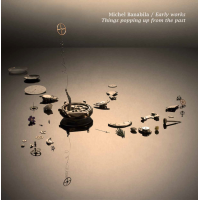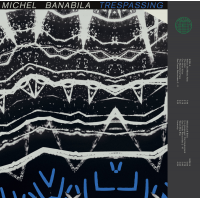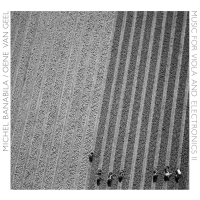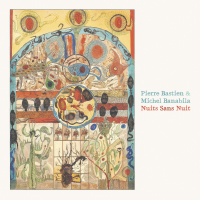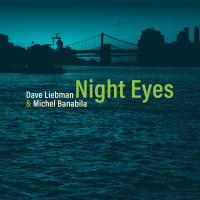Home » Jazz Musicians » Michel Banabila Discography
Things Popping Up from The Past
Michel Banabila
Label: Bureau B
Released: 2016
Views: 3,331
Personnel
Michel Banabila
electronicsAlbum Description
Early works / Things popping up from the past Michel Banabila, born 1961, is a sound artist, composer, and producer. Banabila releases music since 1983 and has produced musical scores for numerous films, documentaries, theatre plays and choreographies. This album collects 11 songs from his early years, released on tape, vinyl EPs or limited CD editions: beautiful minimal loop-based electronica, neo-classical pieces and ambient drone music. A true discovery ! (Bureau B) soundcloud.com/bureau-1/bb227-michel-banabila-early-works liner notes: Numerous threads run through the music of Michel Banabila, whose contemporary work ranges from adventurous electronic cross-breeding of chamber instrumentation, to industrial rhythmic sampling, to outward-bound modular synthesis, to deeply elegiac drones. What is remarkable about this collection of early pieces is just how many of Banabila’s ongoing fascinations had already taken root, when he was barely half his current age. The child apparently is not merely the father to the man; he is also his music tutor. In particular, there are extended sequences of neoclassical loveliness and dense patches of Fourth World exploration that, matters of specific equipment aside, could have been recorded yesterday. Except that they weren’t. The classical activity heard here constitutes a romantic attachment to the Old World, filtered through a contemporary sense of proportion. Banabila’s piano, its atmospheric gestures bringing to mind the proto-minimalism of Erik Satie, echoes with a disarming simplicity. The sweetness of the tune masks his determined compositional focus on loop-like repetitions, on the ever so slight variations between pulses, on training the listener’s ear to hear inside the notes, between the notes, to be receptive to matters that are more tactile than tonal. The melody could easily be an additional hundred years old — except for fact that the refined patterning is something that likely only could have been pursued in light of the music of Michael Nyman and Philip Glass. Similarly, a solo harmonium performance circles around a song that could be a maudlin street-corner serenade in a benighted district of a nameless Eastern European city — and yet it has a self-consciousness of the instrument’s breath-like quality that marks it, however subtly, as modern music. And, of course, this isn’t modern music. This is music several decades after the fact. It is no longer of our time. The equipment on which it was made, notably an early sampler, was limited in various ways, key among them the relatively circumspect set of capabilities, especially in terms of memory storage, and the lack of received performance techniques. The equipment was simple and it was new, and neither factor limited Banabila’s ambition; to the contrary, the tools concentrated his imagination. If the classical pieces represent the Old World as framed by the new, then the more recognizably “electronic” work here is likewise most at home in a fictional place, an idealized zone. That zone is a quiet neighborhood in the Fourth World, to borrow Jon Hassell’s terminology, one in which digital tools render something that is, for all its technological dependency, ultimately a form of folk music — an otherworldly folk music for another time. At that time and in that place, a percussive guitar figure lends momentum to ethereal synthesized choral vocals. Fidgety percussion plays amid a fierce but restrained guitar line (there are echoes of Laurie Anderson and Adrian Belew). An ambiguous and elongated drone, thick with subliminal activity, beautiful in its toxic anxiety, suggests dire activity on the horizon. And yet the horizon wasn’t dire. Quite the contrary, what was ahead for Banabila was a long string of releases, a healthy and well-documented career in which so many of these individual threads have been provided time and space to have entire records dedicated to their pursuit. This album of archival works is a document, and what it documents is the continuity inherent in Banabila’s music. It is a map in musical form, and the path it traces is one that crisscrosses back and forth between the Old World and the Next. Marc Weidenbaum San Francisco, California February 2016

